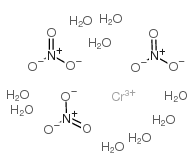In vitro metabolism and permeation studies in rat jejunum: organic chromium compared to inorganic chromium.
B Gammelgaard, K Jensen, B Steffansen
Index: J. Trace Elem. Med. Biol. 13(1-2) , 82-8, (1999)
Full Text: HTML
Abstract
The purpose of these studies was to compare the in vitro absorption of two inorganic chromium(III) compounds: chromium chloride and chromium nitrate, with organic chromium(III)-picolinate; and to investigate if any in vitro metabolism of chromium(VI) takes place. The in vitro metabolism studies showed that chromium (VI) was reduced by artificial gastric juice. The reduction followed first order kinetics with a half-life of 23 min. The studies also showed that the chromium picolinate complex was stable in artificial gastric juice for 4 hours. By the rat everted gut sac technique, chromium chloride, chromium nitrate and chromium picolinate penetrated the rat jejunum with 165 +/- 59, 160 +/- 26 and 127 +/- 36 ng chromium per g rat jejunum, respectively, whereas the permeability coefficients (Papp) were 0.7 +/- 0.3, 1.0 +/- 0.4, and 9.6 +/- 2.2 microns/min, respectively. Absorption studies on pig intestine in Ussing chambers showed a nearly total adsorption of chromium(III) by the chambers, resulting in unreliable data.
Related Compounds
| Structure | Name/CAS No. | Molecular Formula | Articles |
|---|---|---|---|
 |
Chromium(III) nitrate nonahydrate
CAS:7789-02-8 |
CrH18N3O18 |
|
[Predicting the combined effect of metals using toxico-kinet...
1987-08-01 [Gig. Sanit. (8) , 13-6, (1987)] |
|
Effects of anthocyanin-rich extract from red cabbage leaves ...
2007-11-01 [Ecotoxicol. Environ. Saf. 68(3) , 343-50, (2007)] |
|
The biochemical response to different Cr and Cd concentratio...
2011-01-15 [J. Hazard. Mater. 185(1) , 204-11, (2011)] |
|
Elucidation of the percutaneous absorption of chromium compo...
2009-11-01 [Proteomics 9(22) , 5120-31, (2009)] |
|
Induction of lipid peroxidation in mice by hexavalent chromi...
1989-12-01 [Nippon. Juigaku Zasshi. 51(6) , 1103-10, (1989)] |